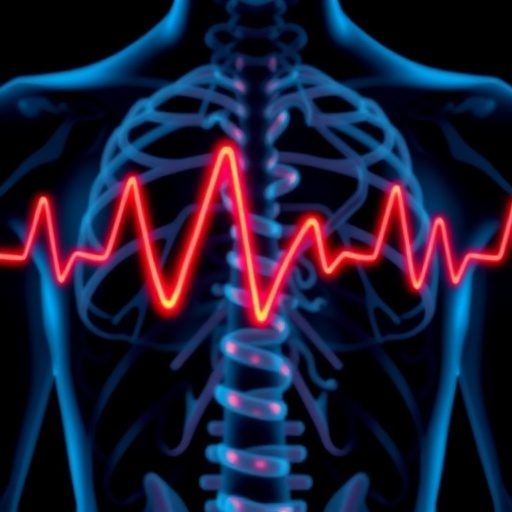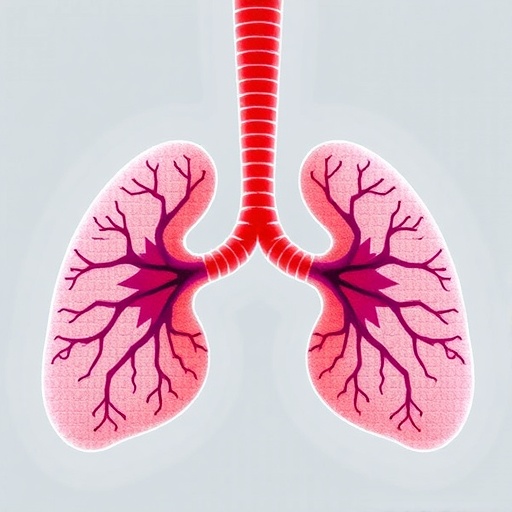
Recent research has unveiled intriguing correlations between immune cell ratios in circulation, high-density lipoprotein cholesterol (HDL-C), and testosterone levels, shedding new light on the complex interactions between cardiovascular health and endocrine function in adult men. This study, drawing on extensive data from the National Health and Nutrition Examination Survey (NHANES) conducted between 2011 and 2016, examines these relationships in detail, providing significant insights into how immune parameters and lipid profiles may influence hormonal levels in the male population.
The backdrop of this research lies within the growing body of literature that connects lipid metabolism with immune system activity. High-density lipoprotein cholesterol, commonly known as “good” cholesterol, plays a vital role in cardiovascular health by facilitating the transport of cholesterol away from arteries and towards the liver for excretion. Previous studies have established that HDL-C possesses anti-inflammatory properties, impacting immune responses and thereby influencing various health outcomes.
In this extensive analysis, Mei and colleagues meticulously categorized circulatory immune cells and quantified their ratios relative to HDL-C levels. By leveraging NHANES data, the researchers were able to access a diverse and representative sample of adult men, ensuring the robustness and applicability of their findings. This demographic specificity is crucial, as hormonal and immune dynamics can vary significantly across different populations and age groups.
Testosterone, a key hormone in male physiology, is not only vital for reproductive health but also plays significant roles in muscle mass maintenance, bone density, and overall metabolic function. The interplay between testosterone levels and cardiovascular health has garnered increasing attention in recent years, prompting investigators to explore how fluctuations in immune cell populations may influence testosterone production and regulation.
The study’s findings suggest a noteworthy association between the ratios of specific immune cells and testosterone levels, leading to the hypothesized conclusion that changes in immune system activity may influence hormonal balance. Such outcomes have potential implications for understanding conditions associated with metabolic syndrome, obesity, and cardiovascular disorders, all of which continue to rise at alarming rates globally.
Moreover, the investigation of HDL-C’s role in this relationship enriches the contextual framework for interpreting these associations. Elevated HDL-C levels are generally considered protective against cardiovascular diseases, yet the nuanced interactions with immune cell dynamics present a more intricate picture. The findings emphasize that mere HDL-C levels may not provide a comprehensive understanding of an individual’s health status without considering accompanying immune parameters.
The researchers also discuss the possibility that lifestyle factors, such as diet and physical activity, could mediate these relationships. A diet high in healthy fats and antioxidants, coupled with regular exercise, may enhance HDL-C levels while simultaneously modulating immune cell profiles. Thus, the holistic approach to health that encompasses nutrition, physical activity, and preventive care could be of paramount importance in managing testosterone levels and cardiovascular health.
In broader terms, this research underscores the necessity of integrated health models that consider both endocrine and immune systems as interconnected facets that influence overall health. The traditional separation of these systems in clinical evaluations may overlook critical integrative pathways that can have significant implications for treatment approaches in various metabolic and cardiovascular diseases.
As researchers seek to unravel these complex interactions, it becomes increasingly clear that public health initiatives should prioritize not only cholesterol management but also practices aimed at supporting optimal immune function. Targeted interventions and preventative strategies that address these dual aspects of health may empower men to maintain hormonal balance while safeguarding cardiovascular health as they age.
This study undoubtedly contributes to the growing field of endocrinology and immunology, calling attention to the necessity for further research aimed at clarifying the mechanisms underpinning these relationships. Understanding how immune cell dynamics influence testosterone levels could pave the way for novel therapeutic strategies, particularly for those struggling with low testosterone levels and associated health complications.
The findings detailed in this research publication challenge existing paradigms and encourage scholars to pursue deeper inquiries into the intersections of the immune system, lipid metabolism, and hormonal regulation. Such inquiries are not only crucial for advancing scientific understanding but also hold tremendous potential for optimizing health outcomes in broad populations.
As awareness of these connections continues to rise, it is imperative that healthcare providers stay informed about the latest discoveries that can impact clinical practices. Integrating emerging research into routine patient care may ultimately lead to more personalized and effective approaches for managing men’s health, thereby reducing the burden of related diseases on society as a whole.
In conclusion, the intricate relationship between circulatory immune cell ratios, HDL cholesterol, and testosterone levels underscores the importance of considering multiple health dimensions in tandem. As research progresses, we stand on the cusp of transformative interventions that could enhance both hormone regulation and cardiovascular wellness, promising a brighter and healthier future for men globally.
Subject of Research: Association between circulatory immune cell to high-density lipoprotein cholesterol ratios and testosterone level in adult men.
Article Title: Association between circulatory immune cell to high-density lipoprotein cholesterol ratios and testosterone level in adult men: findings from NHANES 2011–2016.
Article References: Mei, Y., Zhang, B., Chen, Y. et al. Association between circulatory immune cell to high-density lipoprotein cholesterol ratios and testosterone level in adult men: findings from NHANES 2011–2016. BMC Endocr Disord 25, 194 (2025). https://doi.org/10.1186/s12902-025-02015-x
Image Credits: AI Generated
DOI: 10.1186/s12902-025-02015-x
Keywords: HDL-C, testosterone, immune cell ratios, NHANES, men’s health, cardiovascular health, endocrine function.
Tags: anti-inflammatory properties of HDLcardiovascular health in adult menhigh-density lipoprotein and immune functionhormonal influences on immune parametersimmune cell ratios and cardiovascular healthimmune system activity and cholesterol transportlipid metabolism and endocrine interactionsmen’s health research and findingsNHANES study on men’s healthrelationships between hormones and immune cellstestosterone and lipid profilestestosterone levels and HDL cholesterol




